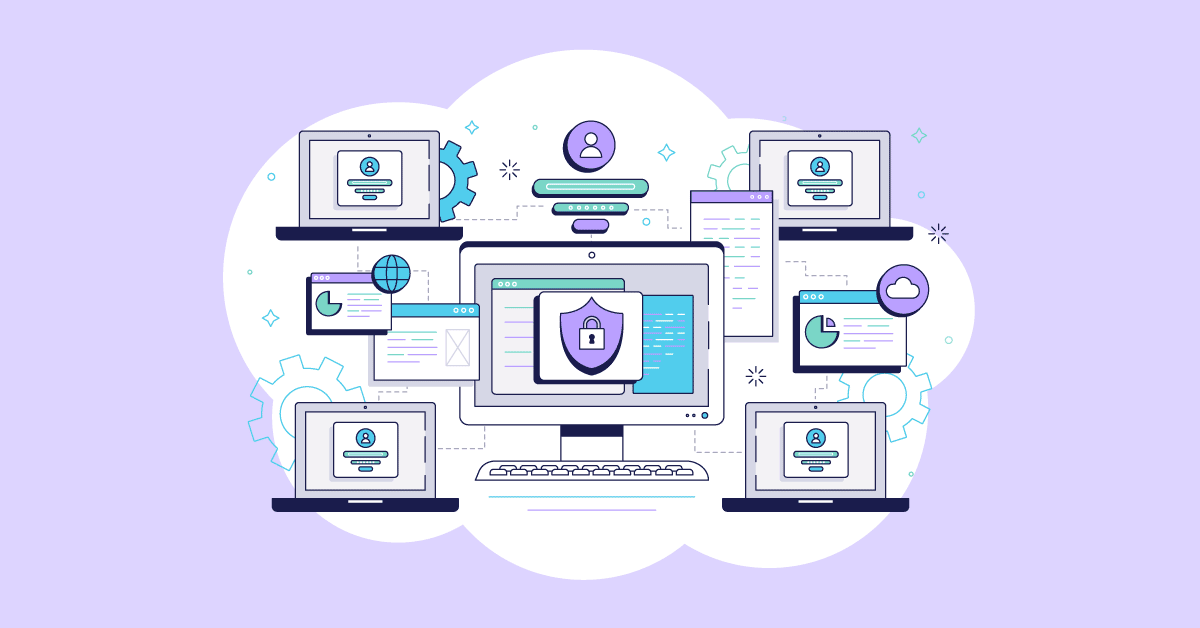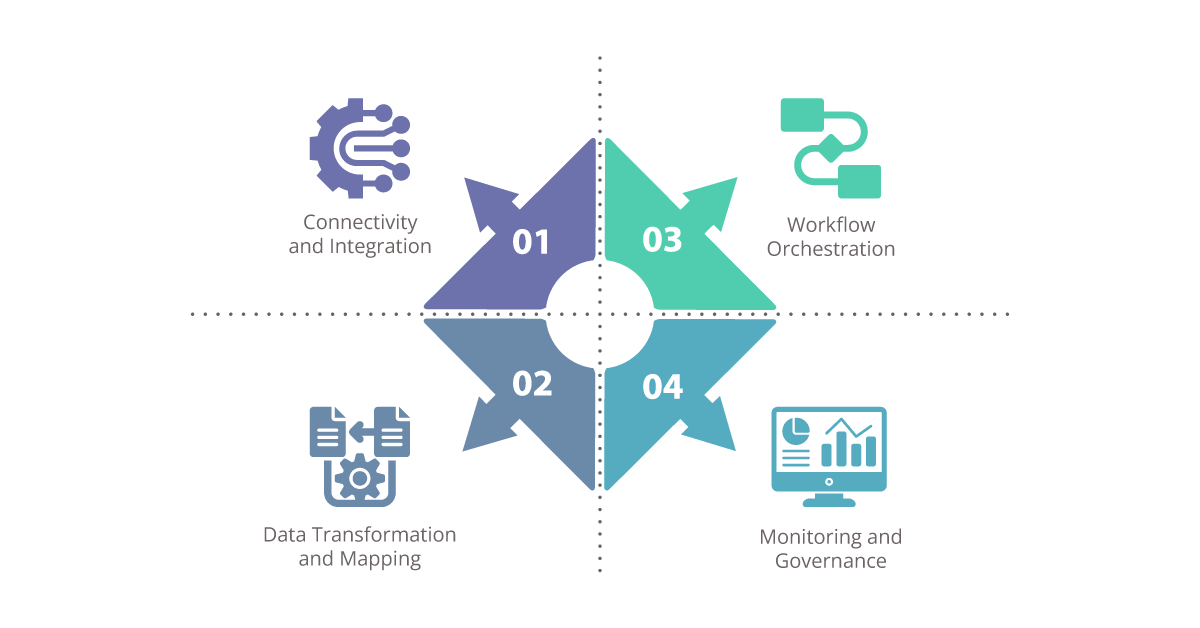Legacy systems refer to outdated or obsolete software and hardware that have been in use for a considerable period. These systems, although once reliable, often pose challenges due to technological advancements and evolving business requirements. In this blog, we will explore the importance of modernizing IT infrastructure and discuss how Integration Platform as a Service (iPaaS) can help integrate legacy systems into a more agile and efficient IT ecosystem.
Aonflow iPaaS – Free for First 3 Months!
Build and run up to 1,500 transactions monthly with no cost. No payment info needed!
The Need for Modernizing IT Infrastructure
As businesses evolve, their IT requirements change as well. Legacy systems can hinder progress and restrict the ability to adapt to new market trends and customer demands. Organizations must recognize the need for modernization to overcome the limitations of legacy systems and leverage the benefits offered by modern IT infrastructure.
Evolving Business Requirements
Businesses today operate in a dynamic environment where agility and responsiveness are critical. Legacy systems are often inflexible and lack the capabilities required to meet changing business needs. Modernizing IT infrastructure allows organizations to align their systems with evolving business requirements, enabling them to innovate, scale, and respond to market demands effectively.
For example, a retail company that relies on a legacy point-of-sale (POS) system may face challenges when implementing new payment methods or integrating with e-commerce platforms. By modernizing their IT infrastructure and integrating the legacy POS system with a cloud-based payment gateway and an e-commerce platform through iPaaS, the company can offer customers a seamless omnichannel experience and improve operational efficiency.
Benefits of Modernization
Modernizing IT infrastructure brings numerous benefits that positively impact business operations and outcomes:
a. Increased Operational Efficiency: Legacy systems often involve manual and time-consuming processes. Modernizing IT infrastructure allows organizations to automate workflows, streamline operations, and eliminate redundant tasks, leading to increased efficiency and productivity.
b. Improved Scalability: Legacy systems may struggle to handle increasing data volumes and user demands. Modern IT infrastructure provides scalability, allowing organizations to accommodate growth and peak loads effectively. Aonflow iPaaS platform, with its cloud-based nature, offers scalable resources and the ability to handle large data volumes.
c. Enhanced Customer Experiences: Legacy systems may hinder the delivery of personalized and seamless customer experiences. By integrating legacy systems with modern applications through iPaaS, organizations can achieve a 360-degree view of customers, enabling personalized interactions, targeted marketing campaigns, and improved customer satisfaction.
d. Reduced Maintenance Costs: Legacy systems often require specialized skills and dedicated resources for maintenance and support. Modernizing IT infrastructure reduces dependency on outdated technologies and minimizes maintenance costs. By leveraging iPaaS, organizations can shift from a capital expenditure (CapEx) model to an operational expenditure (OpEx) model, reducing upfront infrastructure costs.
Aonflow is the leading integration platform.
You can kick-start by integrating your first-ever workflow in just a matter of minutes.
Understanding iPaaS (Integration Platform as a Service)
iPaaS is a cloud-based platform that facilitates the integration of various applications, data sources, and systems across an organization. It provides a unified environment for connecting disparate systems, enabling seamless data flow and process automation. Let’s explore the features and capabilities of iPaaS that make it an ideal solution for integrating legacy systems.
Connectivity and Integration: iPaaS offers a wide range of connectors, adapters, and APIs that allow organizations to connect and integrate legacy systems with modern applications, cloud services, and third-party platforms. These connectors facilitate data exchange and enable organizations to leverage the functionalities of both legacy and modern systems.
Data Transformation and Mapping: iPaaS platforms provide tools for data transformation and mapping, which are essential for ensuring compatibility between different data formats and structures. Data mapping allows organizations to define how data from legacy systems should be transformed and mapped to match the data requirements of modern applications.
Workflow Orchestration: iPaaS enables the creation of end-to-end workflows by orchestrating data flows and automating business processes. Organizations can define workflows that involve legacy systems, modern applications, and external services, allowing for seamless coordination and execution of tasks.
Monitoring and Governance: iPaaS platforms offer monitoring and governance capabilities, allowing organizations to track data flows, monitor integration performance, and ensure compliance with security and regulatory requirements. These features provide visibility into the integration process and help identify and address any issues or bottlenecks.
Integrating Legacy Systems with iPaaS
Integrating legacy systems can be a complex task due to their outdated architectures, proprietary interfaces, and incompatible technologies. However, iPaaS plays a crucial role in overcoming these challenges. By acting as a mediator between legacy systems and modern applications, iPaaS enables smooth data exchange and facilitates process automation. Let’s explore the specific ways iPaaS can be utilized for legacy system integration.
Legacy Application Integration: Many organizations rely on legacy applications for critical business processes. These applications may have limited integration capabilities and may not support modern APIs or standards. iPaaS can bridge the gap by connecting legacy applications with other systems and applications through connectors, adapters, or custom APIs.
For example, a healthcare provider may have a legacy electronic medical records (EMR) system that lacks interoperability with newer systems. By integrating the legacy EMR system with iPaaS, the healthcare provider can enable secure and real-time exchange of patient data with other healthcare providers, laboratories, and insurance systems.
Legacy Data Integration: Legacy systems often store valuable data accumulated over many years. Migrating and consolidating data from legacy systems into modern data warehouses or analytics platforms is crucial for gaining insights and making informed business decisions. iPaaS can facilitate data extraction, transformation, and loading (ETL) processes, ensuring data integrity and accuracy during migration.
For example, a financial institution may need to migrate customer data from multiple legacy systems into a new CRM platform. iPaaS can extract data from legacy systems, cleanse and transform it, and load it into the new CRM platform, enabling a unified view of customers and improved customer relationship management.
Legacy System Extension: In some cases, organizations may want to extend the capabilities of legacy systems by integrating them with modern applications or services. iPaaS can enable this extension by integrating legacy systems with cloud-based services, IoT devices, or mobile applications, allowing organizations to leverage the functionalities of both legacy and modern technologies.
For instance, a manufacturing company may have a legacy inventory management system that lacks real-time inventory tracking. By integrating the legacy system with iPaaS and IoT sensors, the company can monitor inventory levels in real-time, automate reordering processes, and minimize stockouts.
Key Considerations for Successful Integration
Successful integration of legacy systems with iPaaS requires careful planning and consideration of various factors. Let’s explore some key considerations to ensure a smooth and effective integration process:
Legacy System Assessment: Before integration, conducting a thorough assessment of legacy systems is essential. Understanding their limitations, dependencies, and data structures helps in designing an effective integration strategy. It is crucial to document the interfaces, protocols, and data formats used by legacy systems to identify any potential integration challenges.
Data Mapping and Transformation: Legacy systems often have different data formats and structures. Mapping and transforming data between legacy and modern systems require careful planning to ensure seamless integration and data consistency. Organizations should define data mapping rules and transformations to ensure that data flows smoothly between systems.
Security and Compliance: Integrating legacy systems with modern applications requires attention to security and compliance. iPaaS solutions provide built-in security measures, including encryption and access controls, ensuring data privacy and regulatory compliance. It is important to assess and address any security vulnerabilities and ensure data protection during the integration process.
Scalability and Flexibility: Consider future scalability requirements and the ability to adapt to changing business needs. iPaaS platforms offer scalability and flexibility, allowing organizations to add new integrations and adjust existing ones as their IT ecosystem evolves. Ensure that the chosen iPaaS solution can handle growing data volumes and support the organization’s long-term integration needs.
Best Practices for Modernizing IT Infrastructure
To ensure a successful modernization journey and maximize the benefits of integrating legacy systems, organizations should follow these best practices:
Phased Approach to Modernization: Breaking the modernization process into phases reduces risks and allows organizations to validate integration outcomes incrementally. This approach minimizes disruptions and provides opportunities for course correction. Start with low-risk integrations and gradually move towards more complex ones, ensuring that each phase delivers tangible business value.
Engaging Stakeholders and End-Users: Involving stakeholders and end-users throughout the integration process fosters collaboration and ensures that the integrated solution meets their specific needs. User feedback and involvement contribute to successful adoption and a smoother transition. Conduct user training and provide ongoing support to facilitate user acceptance and adoption of the integrated systems.
Continuous Monitoring and Optimization: After integration, continuous monitoring and optimization are crucial for maintaining system performance, identifying bottlenecks, and addressing any issues promptly. Regular assessments and updates help organizations maximize the benefits of modernized IT infrastructure. Monitor integration performance, analyze data flows, and optimize processes to ensure efficient and reliable data exchange between legacy and modern systems.
Embrace Cloud-Native Technologies: Cloud-native technologies, such as iPaaS, provide agility, scalability, and cost-efficiency. Leveraging cloud-based solutions reduces infrastructure complexities and allows organizations to focus on their core competencies. Embrace cloud-native technologies that support hybrid integration models, enabling seamless connectivity between on-premises legacy systems and cloud-based applications.
Conclusion
Modernizing IT infrastructure is vital for organizations aiming to stay competitive and responsive in today’s rapidly evolving business landscape. Integrating legacy systems with iPaaS allows businesses to unlock the potential of their existing investments while embracing modern technologies and capabilities. By following best practices and leveraging the power of iPaaS, organizations can streamline operations, enhance customer experiences, and future-proof their IT ecosystem. With iPaaS as an integration enabler, organizations can transform their legacy systems into agile and efficient components of a modern IT infrastructure.
Aonflow iPaaS – Free for First 3 Months!
Build and run up to 1,500 transactions monthly with no cost. No payment info needed!


